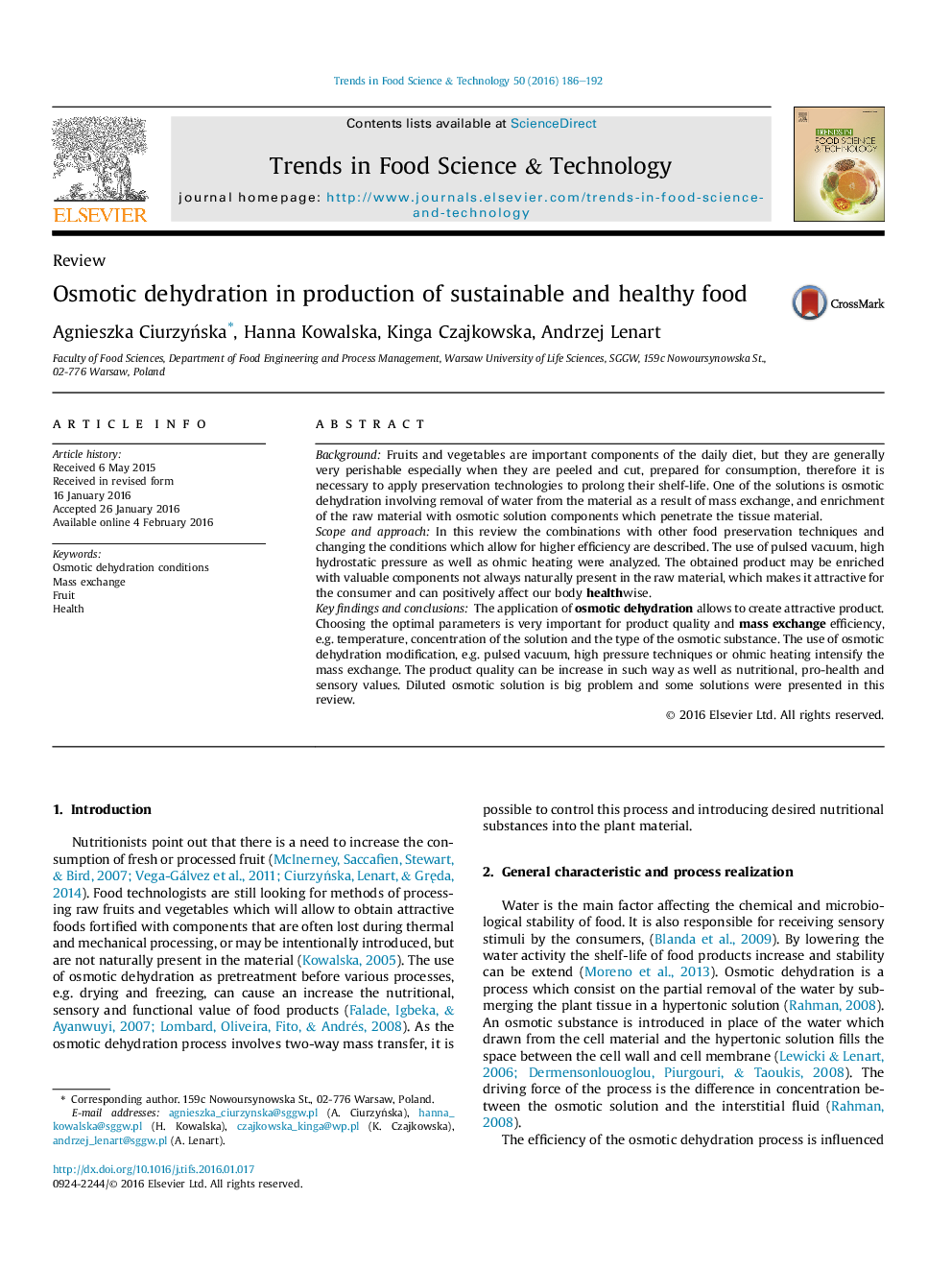| Article ID | Journal | Published Year | Pages | File Type |
|---|---|---|---|---|
| 2098459 | Trends in Food Science & Technology | 2016 | 7 Pages |
•The osmotic dehydration is a process used to obtain sustainable and healthy food.•The use of osmotic dehydration modification can raise quality of finished product.•The high hydrostatic pressure increase the efficiency of mass transfer.•The pulsed vacuum before dehydration has a positive effect on product quality.
BackgroundFruits and vegetables are important components of the daily diet, but they are generally very perishable especially when they are peeled and cut, prepared for consumption, therefore it is necessary to apply preservation technologies to prolong their shelf-life. One of the solutions is osmotic dehydration involving removal of water from the material as a result of mass exchange, and enrichment of the raw material with osmotic solution components which penetrate the tissue material.Scope and approachIn this review the combinations with other food preservation techniques and changing the conditions which allow for higher efficiency are described. The use of pulsed vacuum, high hydrostatic pressure as well as ohmic heating were analyzed. The obtained product may be enriched with valuable components not always naturally present in the raw material, which makes it attractive for the consumer and can positively affect our body healthwise.Key findings and conclusionsThe application of osmotic dehydration allows to create attractive product. Choosing the optimal parameters is very important for product quality and mass exchange efficiency, e.g. temperature, concentration of the solution and the type of the osmotic substance. The use of osmotic dehydration modification, e.g. pulsed vacuum, high pressure techniques or ohmic heating intensify the mass exchange. The product quality can be increase in such way as well as nutritional, pro-health and sensory values. Diluted osmotic solution is big problem and some solutions were presented in this review.
